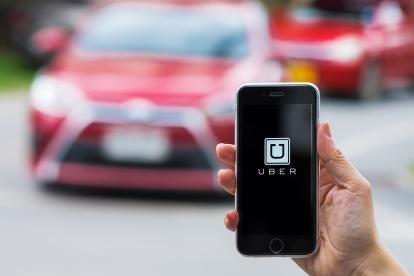UberX and UberBLACK drivers are independent contractors, not employees, of Uber, the General Counsel (GC) of the National Labor Relations Board (NLRB) has determined in a recently released Advice Memorandum.
The drivers therefore are not employees within the meaning of the National Labor Relations Act (NLRA) and are not eligible for NLRB-certified union representation or the protections of the NLRA.
The Memorandum applies the NLRB’s decision in SuperShuttle DFW, Inc., 367 NLRB No. 75 (Jan. 25, 2019), in which the NLRB overruled a 2014 Board decision that had made it harder to prove an individual was an independent contractor. In SuperShuttle, the Board held that, in deciding whether an individual is an independent contractor or an employee, it will return to focusing on the extent to which the arrangement between the ostensible employer and the alleged employee provided an “entrepreneurial opportunity” to the individual, a factor downplayed in the 2014 decision.
NLRA Definition of Employee
Section 2(3) of the NLRA defines an “employee.” That definition expressly excludes “independent contractors.”
To determine whether an individual is an employee or independent contractor, the Board looks to the 10-factor common law test of agency in the Restatement (Second) of Agency. No single factor is controlling, and the chief focus is on the individual’s risks and opportunities from entrepreneurial activity. In the ride-hail and taxicab industry the NLRB gives significant weight to two factors: (1) the degree of control the company has over the amount and manner of the work performed; and (2) the relationship between the individual’s compensation and the revenue collected.
Control of the Work
The GC found that UberX drivers had significant entrepreneurial opportunities, because drivers had “near complete control of their cars and work schedules” and log-in (i.e., work) location, and they were completely free to work for competitors at any time. Drivers had complete discretion to work or not, any day or any time, as long as they provided at least one ride per month. Drivers may increase their earnings by working during periods of high demand, when Uber triggered “surge” pricing, logging in in certain areas and at certain times and accepting a minimum number of riders when Uber provided incentives to do so.
The GC noted that Uber exercised little control over the drivers. Uber requires certain minimum service standards, such as the cleanliness, condition, and comfort of cars, professional appearance, cordial behavior, safe driving, and efficient navigation. However, the GC noted that none of the standards demonstrated significant control by Uber or affected the drivers’ entrepreneurial opportunities.
Method of Payment
The GC explained that the method of payment for individuals is important because it can influence the incentive the company has to control the individual’s work. If the individual is paid by a flat fee, the company has little incentive to control the work because its cost and profit are not affected by how the work is performed. However, if the individual is compensated by commission, the company has a distinct incentive to control the work to increase the amount of commission as it shares in the increased fees. The GC stressed that the actual control exercised by the company is more important than the incentive for control a particular manner of pay may provide.
While noting Uber keeps a portion of the fee received for each ride, and it, therefore, has an incentive to control the drivers’ work, Uber actually exercised minimum control over the work of the drivers. Consequently, although the manner of payment suggests the drivers are employees, the limited control Uber exercised over the work of the drivers negated the importance of the incentive the manner of payment created.
Other Factors Favoring Independent Contractor Status
The GC discussed three additional factors that militated toward a finding of independent contractor status. First, the drivers were in control of “the principal instrumentality of the work” — the car — and they paid the chief operating expenses associated with the work: fueling, cleaning, and maintaining the vehicle. Second, the drivers received no supervision of their work from Uber. Finally, both the drivers and Uber understood their relationship was one of independent contractor, reflected by the facts that Uber issued the drivers with a Form 1099, not a Form W-2, and did not provide them any fringe benefits.
Factors Favoring Employee Status
The GC noted two factors that favored finding employee status: (1) the drivers needed no special skills to perform their work; and (2) the drivers were not working in a distinct business, but were working to fulfil Uber’s business purpose. However, the GC concluded those factors did not overcome the strong facts favoring independent contractor status.
UberBLACK
The GC found that UberBLACK drivers shared nearly all the characteristics of UberX drivers, and that the differences between the two even more strongly supported a finding of independent contractor status. The GC noted four facts: (1) UberBLACK drivers made a more significant capital investment, as their vehicles were more expensive; (2) they could hire other drivers to take a fare; (3) they could accept UberX riders in addition to UberBLACK riders; and (4) Uber contracts with UberBLACK drivers as a business, rather than as an individual.
Employers should expect the release of other Advice Memoranda from the GC dealing with this issue in other industries. As those are released, it will become clearer what the GC believes are the parameters of the SuperShuttle decision.






 />i
/>i

